|
Izobraževanje
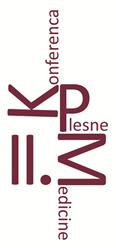
2. Konferenca plesne medicine v Sloveniji
31. avgust 2012
v okviru 7. mednarodnega festivala Front@ sodobnega plesa Murska Sobota, Slovenija
LECTURERS AND SUBJECTS
Stef Harley
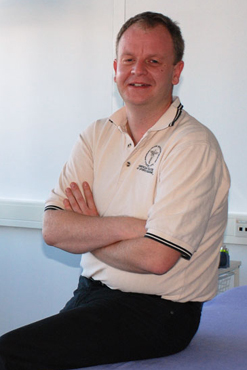
Stef Harley, Master in Rehabilitation Sciences and Physiotherapy (MRSPT)
Stef Harley obtained his Masters degree in Rehabilitation Sciences and Physiotherapy from the Free University of Brussels, Belgium, where he was later involved in research in cryotherapy and preliminary research in sports physiology in overtraining and nutrition. Later, in Slovenia, he contributed to the product development of Kosmodisk as a low back pain relief device and worked as a Marketing Manager for a global leading, Slovene medical laser device manufacturer. Since returning to physiotherapy practice, Stef runs his own private physiotherapy practice in which the mainstay of his work is treating musculoskeletal disorders and sports injuries, using a wide variety of state-of-the-art concepts and techniques. His main clinical research interests lie in the areas of the spine, temporomandibular disorders and posture. A large part of his patient base comes from various aspects of Slovene dance; hip hop, jazz and classical ballet, contemporary dance and folklore. From his practical experience it is Stef’s impression that the physical stresses placed on the musculoskeletal system and the demands placed by dancers on their bodies are highly underestimated by the majority of medical and allied health care professionals as well as trainers. Through the use of advanced diagnostics principles and specific functional rehab training, Stef seeks to improve symmetry in the trained body and prevent injury or reinjury.
Method/Workshop
Rehabilitation of dance injuries; our practical experience in dealing with artists as top-athletes
The physical stresses on the musculoskeletal system in dance and the demands by dancers on their bodies are easily underestimated by the majority of medical and allied health care professionals as well as trainers. In our practice we treat many acute to chronic injuries sustained in dance and use advanced diagnostics principles and specific functional rehab training to improve symmetry in the dance-trained body and prevent injury or reinjury.
The aim of our presentation is to give an overview of recent incidence of injuries sustained in dance and determine potential risk factors contributing to acute and chronic injury and reinjury. We will introduce our practical experience in assessing dancers’ specific needs for rehabilitation and prevention. And through case studies aim to explain our philosophy in dealing with dance-specific athletes. The bottom line in our therapeutic approach is that we try to make dance artists and their immediate surroundings understand that they need to treat their bodies as if top-athletes.
Ingrid Kerec
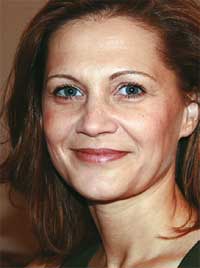
Ingrid Kerec is a former professional dancer, and has completed her training as a Certified Rolfer® and Rolfing®Movement practitioner in 1998.
Her work covers all aspects of Rolfing – from manual work at her Practice at Rolfing Studio Wien, to her teaching Applied Anatomy at different professional dance schools and institutions in Vienna. She also gives Movement coaching workshops for professional groups, such as Dance, Yoga, Pilates, Gyrotonic and many other different sport and fitness disciplines.
Additionally, through her dance training and practical experience, she has developed a form of body-work specifically designed for all types of dancers and dance teachers. This work is based on Rolfing concepts and the theory of Dance Medicine.
Method/Workshop description
Myofascial structures (muscles, ligaments, tendons, joint linings and fasciae) provide the body with both stability and flexibility.
Various movements and arm positions often lead to unnecessary tension and inflexibility in dancers – not solely locally in the shoulders and arms, but also in the neck and spine.
This workshop will utilise various techniques and poses to prepare the body for dance technique training, with a focus on shoulders and arms. This will help us to stretch and strengthen the tissue in the three-dimensional myofascial system by using a neutral joint position and open body posture, the basis for all port-de-bras, be it classical or contemporary.
The movement sequences are based on Rolfing®, Rolfing® Movement Integration and follow the Tensegrity® model.
Nataša Kos Križmančič
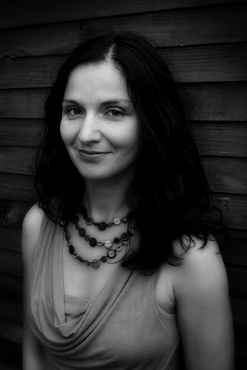
Nataša Kos Križmančič graduated in contemporary dance at Amsterdam’s University of Arts before embarking on a career as a dancer and choreographer in Slovenia and abroad. In 2006 she was certified as a Sorensensistem TM face and foot reflexologist. She performs individual therapies in Ljubljana, Murska Sobota and Nova Gorica. Her activities include both prevention and remedial therapies.
Method/Workshop
Reflex therapy is a natural and effective therapeutical method. It helps to ameliorate a wide range of issues, as it contributes towards homeostasis, the body’s natural balance. Therapy is carried out on parts of the body, such as feet, face, hands, ears, in order to provide a therapeutical effect on the entire body.
My lecture will explain how reflex therapy can help to improve dancers’ health and physical readiness, how it can be used to prevent and remedy specific dance-related injuries as well as include a reflex therapy feet self-massage program for dancers.
Nuša Romih Masnoglav
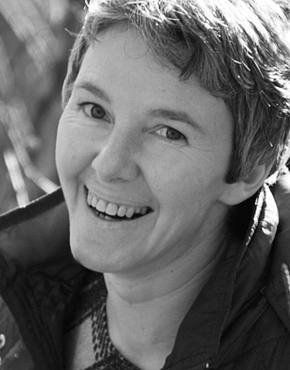
Nuša Romih Masnoglav (a physical education teacher) is the first certified Feldenkreis method teacher in Slovenia.
She fell in love with sports as a young girl and was an avid mountain and free climber between 1984 and 1989.
She graduated from the Faculty of Sport in 1998. During her studies she found employment in the Rakitna Youth Sanatorium, where she conducted sports activities, respiratory exercises and creative workshops for children suffering from asthma and other respiratory diseases. She also organised sports and story-telling days as well as nature camps.
She went solo in 2004 and published a children’s tale entitled “Slonček Smrkolinček (Snotty-Snouted Elephant)”, meant for kids with asthma, persistent bronchitis and cold.
She established the Celestin company in 2005 and joined Feldenkrais method training in Vienna. She completed the course in 2009, receiving a certificate and becoming the first Feldenkreis method teacher in Slovenia. Today the Feldenkreis method is her life and full-time employment.
Method/Workshop
The workshop will provide dancers with a practical insight into the Feldenkreis method. By participating in an awareness-raising lesson through movement they will get to know a unique manner of learning, which integrates a body into a functional whole in an easy way.
Tanja Zgonc
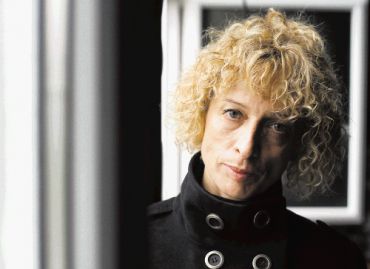
Tanja Zgonc has been creative as choreographer and dancer for 31 years and has been widely recognized on the dance scene at home and worldwide. She created 16 dance shows and received numerous awards: Yugoslav alternative actress (1989), Zlata ptica/Golden Bird (1992), Zlata paličica/Golden Stick (1994), nagrado Prešernovega sklada/ Prešeren's Fund Award (2002) for performance Kagami Reflection in nagrado Povodni mož / Triton Prize for the best performance selected by the critics (2002) for performance Koora. She danced in successful shows of Plesni Teater Ljubljana / Dance Theatre Ljubljana, collaborated with Studio for Free Dance Ljubljana and ten years and Pantomime Studio. She worked with numerous acknowledged theatre directors in Slovenia and abroad and created choreographies/ theatre movement in more than ninety theatre plays. Recently, she has been acting as profesor for movement at the Academy for Theatre, Directing, Film and Television in Ljubljana for several years.
She got acquainted with Butoh 21 years ago becoming a member of Ko Murobushi's International Butoh Dance Company founded in Köln. Later on she also collaborated with companies In-Out (Germany) and Su-En Butoh (Sweden). She has gained further skills in Japanese Butoh with leading masters such as Kazuo Ohno, Yoshito Ohno, Ko Murobushi, Tadashi Endo, Carlotta Ikeda and Min Tanaka.
Tanja Zgonc is choreographer Butohist who, through transformation of various dance techniques and movement methods by using the methodology of Butoh, has developed her very systematics and authorial principle of movement, above all the back. In the latter years acting as leading lecturer she conducts creative workshops with the method of Butoh in her own specific language around the world.
Method/Workshop description
A Synthesis of Butoh and Core Balance Exercises
These exercises aim to balance breathing, speed up blood flow, initiate body warm-up and facilitate focusing of the mind and body.
The period starts with bioenergetic warm-up exercises, which initiate lymph drainage, boost flexibility and elimination of toxins on a deeper level as well as increase the level of oxygen in the blood through deep and focused breathing.
The participants then continue by establishing a balance in the joints through start-up exercises for more flexible movement, balance improvement and body posture. The emphasis here lies on the skeleton, stabilisation of deep muscles and the flow of breath.
The exercises are mainly inspired by butoh, which focuses on the importance of individual self-help activities here and now, the awareness of being here and now and complete consciousness during every activity. Butoh moreover plays an important role in seeking inner peace and the balance between the soul and body. While performing it, we are not interested so much in “why”, but more in “how”, moving from a lack of power sources towards the centre of power. The activities aim to aid participants in shaping themselves more in line with their own vision of the future.
|